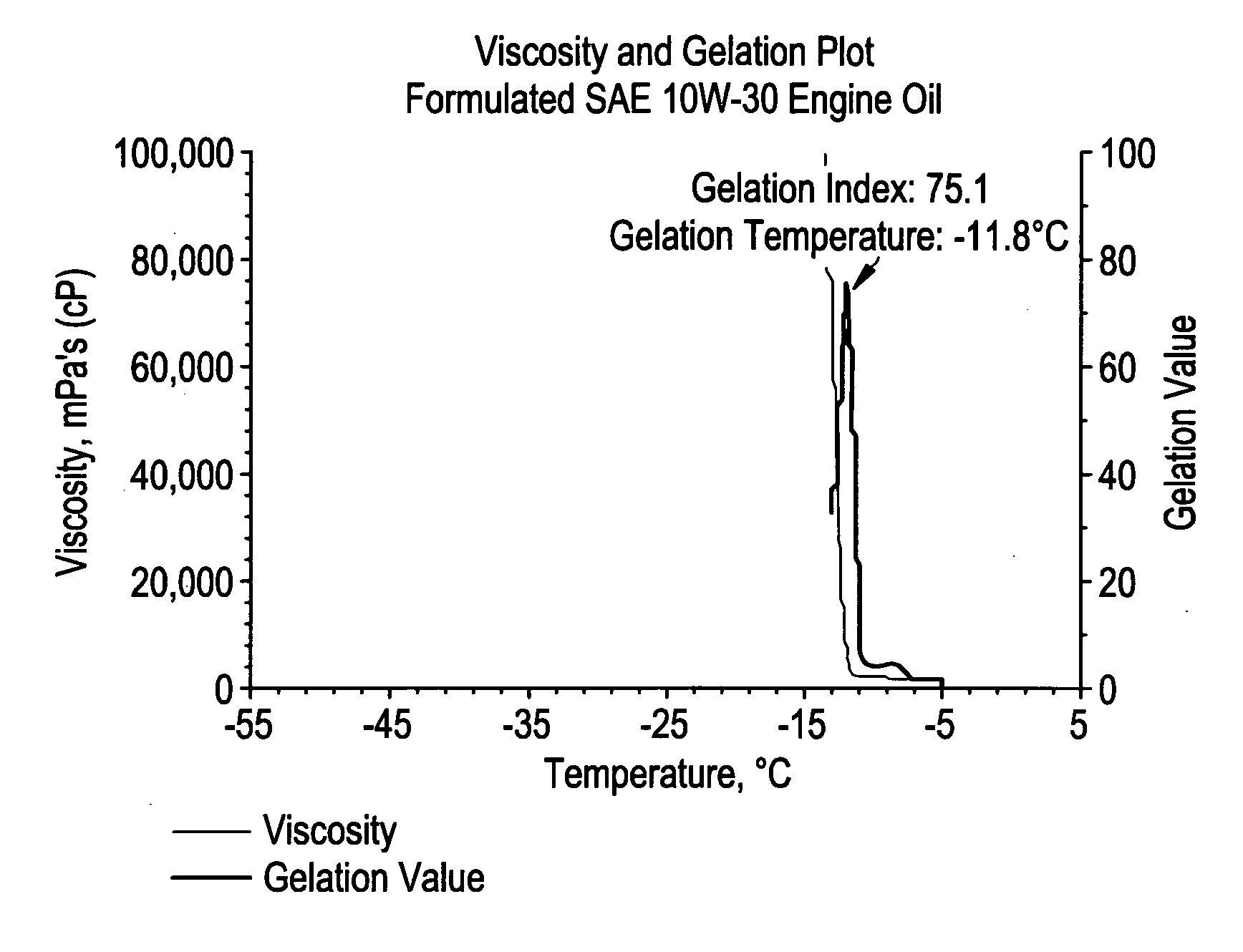Acrylic block copolymer low temperature flow modifiers in lubricating oils
- Summary
- Abstract
- Description
- Claims
- Application Information
AI Technical Summary
Benefits of technology
Problems solved by technology
Method used
Image
Examples
example 1
Polymer Synthesis
[0070] Synthesis of an A—B block copolymer. The A block is polylauryl acrylate (PLA) and the B block is a gradient copolymer of polystearyl methacrylate and polylauryl acrylate (PLA-co-PSMA). For A—B block copolymer:430 g (1.6 mol) of 90% pure lauryl acrylate (LA) (available from Sartomer) was added to a stainless steel resin kettle under nitrogen and brought to 50° C. 2.755 g mono-alkoxyamine initiator (7.22 mmol) was added to the heated lauryl acrylate using 42 g of toluene. The mixture was polymerized at 116-120° C. for 4 hours under nitrogen, reaching 67% conversion of LA monomer.
[0071] The reaction is then cooled to room temperature. The resultant PLA first block has a Mw=40,000 g / mol, and Mn=25,900 g / mol as determined by SEC analysis and referenced to polystyrene standards. This was used as a first block solution without further purification.
[0072] The second block was a gradient copolymer. To 66.7 g of the mixture above (44 g PLA polymer and 22 g LA monome...
example 2
PLA-b-PSMA
[0076] An analogous A—B block copolymer was prepared in which the A block is polylauryl acrylate (PLA) and the B block is a pure block of polystearyl methacrylate (PSMA). A solvent washing procedure removed the residual monomer from the first block PLA from example 1. The neat PLA was then dissolved in toluene (approximately equal weight) prior to adding to the heated stearyl methacylate monomer solution. This protocol resulted in a pure block copolymer of PLA and PSMA.
example 3
[0077] Mixtures of controlled and traditional non-controlled polymers were also prepared. For instance, following example 1.0 through 1.3, after the 2nd block reaches 60% conversion, a traditional initiator source, Luperox 575, (available from Arkema Inc of Philadelphia, Pa.) was added to the reaction mixture at 2 wt % with respect to residual monomer. The reaction mixture was held at 115° C. for 1-2 hours, leaving the residual monomer at <1 wt %. This step provides a blend of controlled and non-controlled polymers. These polymers were isolated by removing the toluene under vacuum.
PUM
| Property | Measurement | Unit |
|---|---|---|
| Percent by mass | aaaaa | aaaaa |
| Percent by mass | aaaaa | aaaaa |
| Percent by mass | aaaaa | aaaaa |
Abstract
Description
Claims
Application Information
 Login to View More
Login to View More - R&D
- Intellectual Property
- Life Sciences
- Materials
- Tech Scout
- Unparalleled Data Quality
- Higher Quality Content
- 60% Fewer Hallucinations
Browse by: Latest US Patents, China's latest patents, Technical Efficacy Thesaurus, Application Domain, Technology Topic, Popular Technical Reports.
© 2025 PatSnap. All rights reserved.Legal|Privacy policy|Modern Slavery Act Transparency Statement|Sitemap|About US| Contact US: help@patsnap.com



